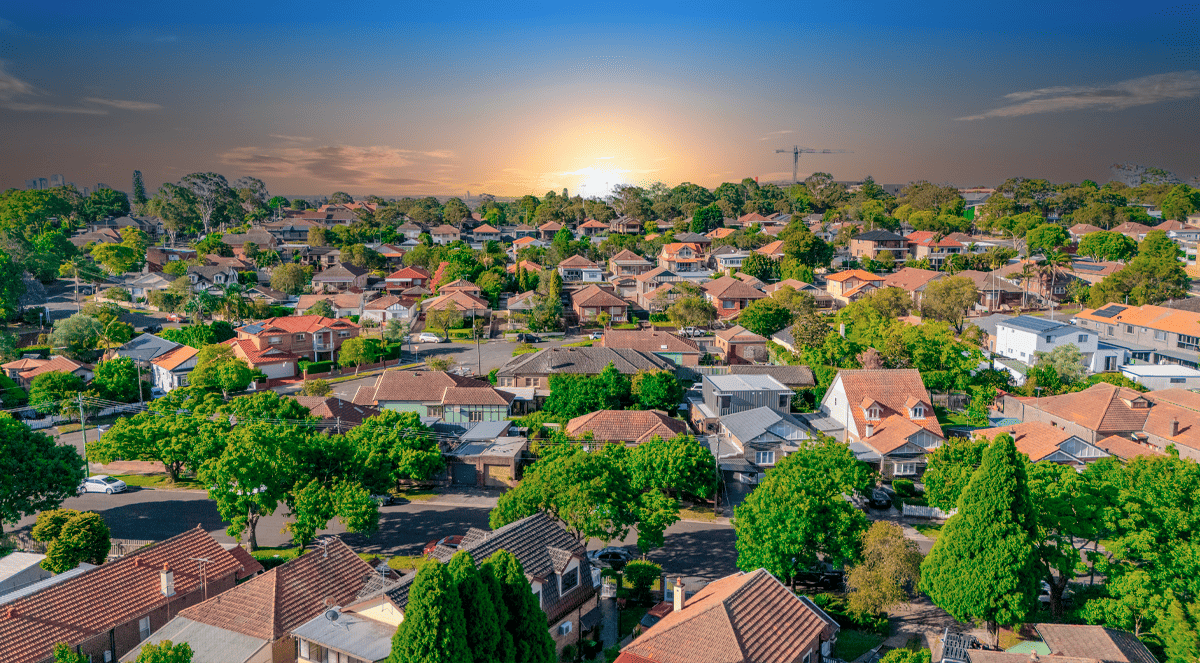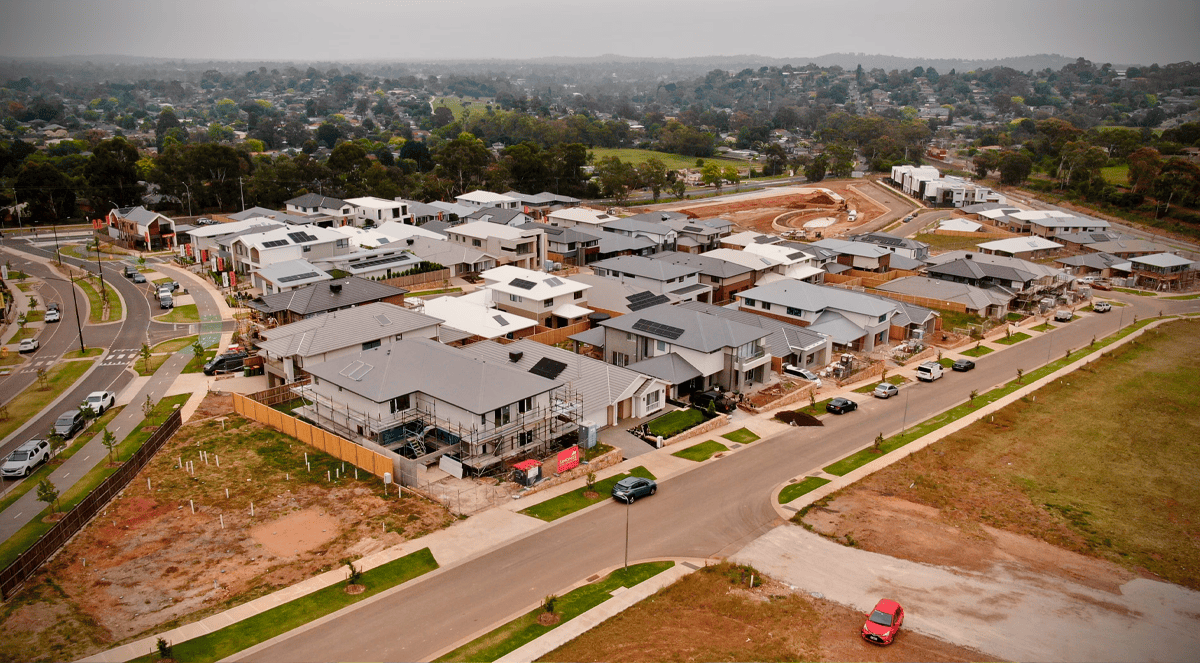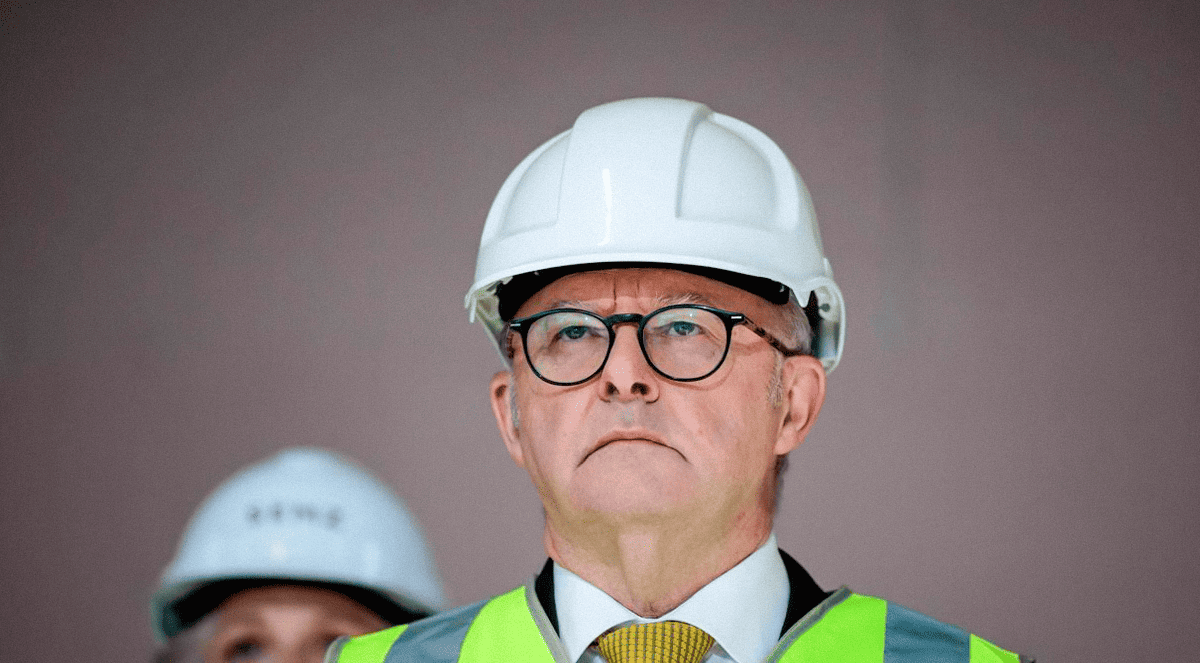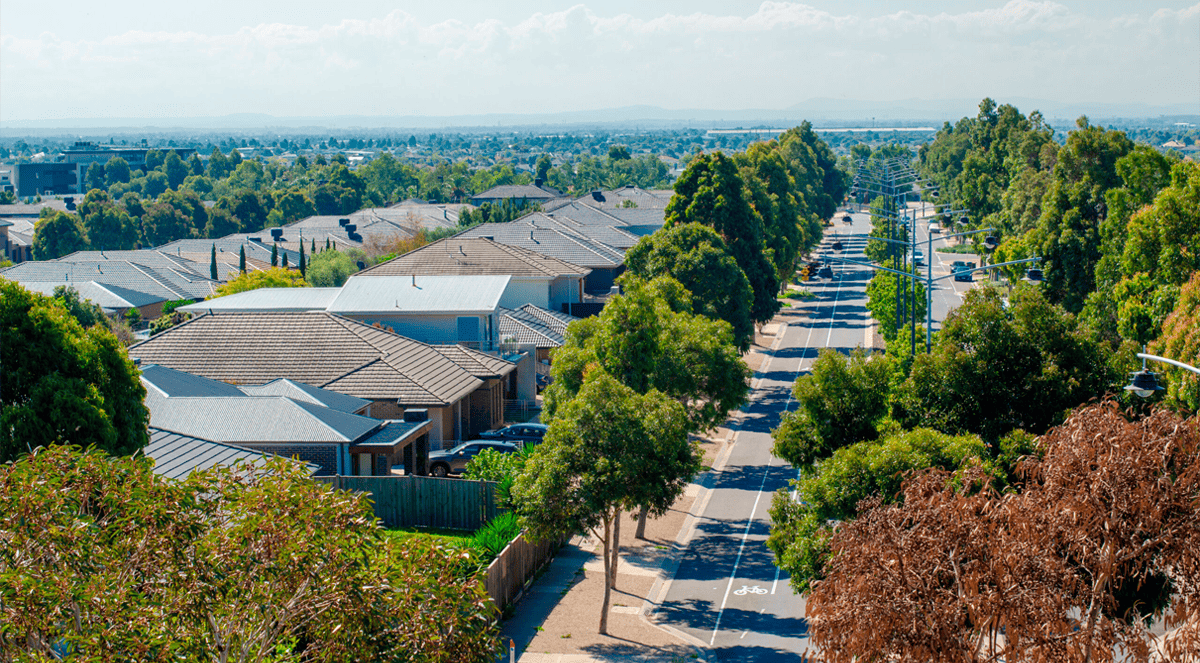Features > Property News & Insights > Market updates
Crisis: The state of Australia’s housing system in 2025
.png)
Image by Peter Rae/Domain
KEY POINTS
- A new report confirms Australia is still in a housing crisis, with home building falling far short of demand, while prices and rents rise faster than incomes
- The report finds labour and material shortages, high costs, lack of land, falling productivity, and complex planning systems as key barriers to home building
- The Housing Supply and Affordability Council recommends five strategies: boosting social housing, improving construction productivity, reforming planning, supporting renters, and fixing tax incentives
A key Federal government advisory body says the housing system is under immense pressure and there’ll continue to be a shortage of homes in Australia in the short-to-medium term.
The State of the Housing System 2025 report, released by the National Housing Supply and Affordability Council, also says the country will fall about 375,000 short of the nationally agreed target of building 1.2 million new homes by mid-2029.
Crisis
“Australia is still very much in a housing crisis that has been decades in the making,” says Susan Lloyd-Hurwitz, the former CEO of giant developer Mirvac, who’s now the Chair of the National Housing Supply and Affordability Council.
The Council’s latest report says Australian households are facing the twin problems of rising prices and affordability challenges.
It says home prices rose by 4.9% in 2024, while rents increased by 4.8% in 2024 and 1.7% in early 2025.
While these rises are slower than price hikes in 2023, they outpaced household income growth, worsening affordability.
In fact, affordability has deteriorated to the point where households with a new mortgage spend 50% of their income on housing, while tenants spend 33% of their household incomes on rent.
The time required to save for a home deposit has blown out to over 10 years, and the house price-to-income ratio has risen to 8.0 (that’s the cost of a median house divided by the median annual household income).
Only 177,000 homes were built in 2024, far below the 223,000 the National Housing Supply and Affordability Council says was needed to meet demand.
“For many Australians…securing a home that is affordable, fit for purpose and secure remains challenging, if not impossible,” Ms Hurwitz-Lloyd says.
While the Council says housing affordability may improve slightly over the next four years, with rent growth expected to slow and the house price-to-income ratio expected to fall slightly, rental conditions will stay tight due to low vacancy rates.
Housing targets
Looking ahead, the State of the Housing System 2025 report estimates that 938,000 homes will be built during the 5-year National Housing Accord period, which ends in mid-2029 – 262,000 homes short of the 1.2 million target.
However, when you factor in demolitions of existing homes, the Council says the net new supply is expected to total just 825,000 new dwellings.
This is 79,000 dwellings fewer than expected when it comes to NEW underlying demand for housing.
So, what the report is saying is that there is already an existing undersupply of homes in Australia, and this will actually get worse by mid-2029.
And in some areas of Australia, the housing shortfall is expected to be particularly bad.
The National Housing Supply and Affordability Council predicts the Northern Territory will only achieve about 31% of its share of the national housing target over the next four years, with Tasmania only achieving 51% and New South Wales only 65%.
At the other end of the spectrum, Victoria is forecast to just fall short, achieving 98% of its implied housing target, while Western Australia, Queensland and the ACT should achieve around 80%.
Why the big housing shortfall?
The State of the Housing System 2025 report blames the projected shortfall of homes on labour and building material shortages, high costs and limited land, a lack of productivity and innovation in the construction sectors and complex planning systems.
However, it notes that “the single biggest constraint on supply currently is that many housing projects are not commercially viable given current land, financing and development costs relative to expected sale prices.”
Solutions
The National Housing and Affordability Council suggests 5 strategies to improve a fairly grim outlook.
- Increase investment in social and affordable housing
- Improve construction sector capacity and productivity
- Overhaul planning systems and ensure developable land is made available
- Support better outcomes for renters
- Ensure the tax system supports housing supply and affordability, not serves to hobble it
These are all worthy goals, but in my view, largely unachievable - at least in the short term.
Federal and state governments have already poured billions into more social and affordable housing, with the report acknowledging 55,000 new social and affordable homes are in the pipeline.
But this number is a drop in the ocean of what’s required after governments spent decades running down Australia’s stock of public housing.
While attempts are being made to train up more building workers, productivity in housing construction has been falling over time - a trend that doesn’t look like it will be turned around anytime soon.
In fact, the Productivity Commission recently reported that the total number of houses built per every hour worked by building workers has more than halved over the past 30 years.
The soaring price of residential land has been a major factor forcing up home prices in affordable areas, largely due to the slow release of new allotments on the outskirts of our major cities.
However, Australia is currently experiencing a chronic shortage of town planners - the people who do much of the grunt work to get new housing developments going.
State governments, like Western Australia, have also been slow to plan and make new land available for housing in cities like Perth.
They’ve been clearly unprepared for the strong population growth seen in that state over the past 5 years.
Better outcomes for renters are clearly important, especially when it comes to safety, repairs and unfair rent rises, but they have to be balanced with landlords' needs for consistency of rules and charges, otherwise you’ll end up scaring investors off and the rental crisis will get worse.
And when it comes to taxes, any changes to incentives like negative gearing or the capital gains tax discount could have a similar effect in dampening investment in rental properties.
The National Housing and Affordability Council also suggests replacing state stamp duties on property purchases with a broad-based land tax system.
However, no matter the economic merits of reform here, good luck getting state governments to forgo a huge upfront stamp duty revenue “sugar-hit” when a property changes hands for a low, long-term charge.
Stay Up to Date
with the Latest Australian Property News, Insights & Education.




.png?width=292&height=292&name=Copy%20Link%20(1).png)
 SIGN UP FOR FREE NEWSLETTER
SIGN UP FOR FREE NEWSLETTER





.jpg?width=1920&height=1080&name=Warning%2c%20You%20Might%20Be%20Facing%20Higher%20Taxes%20Soon%20(1).jpg)





.png?width=1920&height=1080&name=Rate%20Drops%20Signal%20BIGGEST%20Property%20Boom%20in%20DECADES%20(1).png)

.jpg?width=1920&height=1080&name=Labor%20vs%20Liberal%20These%20Housing%20Policies%20Could%20Change%20the%20Property%20Market%20Forever%20(1).jpg)
.jpg?width=1920&height=1080&name=QLD%20Slashes%20Stamp%20Duty%20Big%20News%20for%20Investors%20%26%20Home%20Buyers%20(1).jpg)
.jpg?width=1920&height=1080&name=Trump%20Just%20Slapped%20Tariffs%20%E2%80%93%20Here%E2%80%99s%20What%20It%20Means%20for%20Australia%20(1).jpg)
.jpg?width=1920&height=1080&name=Federal%20Budget%202025%20More%20Debt%2c%20No%20Housing%20%E2%80%93%20Here%E2%80%99s%20What%20You%20Need%20to%20Know%20(1).jpg)
.jpg?width=1920&height=1080&name=Australias%20Housing%20Crisis%20is%20about%20to%20get%20MUCH%20Worse%20(New%20Data%20Warns).jpg)
%20(1).jpg?width=1920&height=1080&name=Australias%20RENTAL%20CRISIS%20Hits%20ROCK%20BOTTOM!%20(2025%20Update)%20(1).jpg)
%20(1).png?width=1920&height=1080&name=Is%20Adelaide%20Still%20a%20Good%20Property%20Investment%20(2025%20UPDATE)%20(1).png)
.jpg?width=1920&height=1080&name=RBA%20Shocks%20with%20Rate%20Cuts!%20What%E2%80%99s%20Next%20for%20Property%20Investors%20(1).jpg)
%20(1).jpg?width=1920&height=1080&name=I%20Predict%20The%20Feb%20Rate%20Cut%20(My%20Price%20Growth%20Prediction)%20(1).jpg)
.png?width=1920&height=1080&name=Why%20Property%20Prices%20Will%20Rise%20in%202025%20Market%20Predictions%20(1).png)
.jpg?width=1920&height=1080&name=Why%20Investors%20Are%20Choosing%20Apartments%20Over%20Houses%202%20(1).jpg)
.jpg?width=1920&height=1080&name=Why%20Rate%20Cuts%20Will%20Trigger%20A%20Property%20Boom%20(1).jpg)
.jpg?width=1920&height=1080&name=Retire%20On%202Million%20With%20One%20Property%20(Using%20SMSF).jpg)
.jpg?width=1920&height=1080&name=4%20Reasons%20Why%20You%20Should%20Invest%20in%20Melbourne%20Now%20(1).jpg)
%20(1).jpg?width=1920&height=1080&name=Old%20Property%20vs%20New%20Property%20(Facts%20and%20Figures%20Revealed)%20(1).jpg)
%20(1).jpg?width=1920&height=1080&name=Will%20The%20New%20QLD%20Govt%20Create%20a%20Property%20Boom%20or%20Bust%20(My%20Prediction)%20(1).jpg)
%20Scott%20Kuru%20(1).jpg?width=1920&height=1080&name=Inflation%20Hits%20Three-Year%20Low%20(Will%20RBA%20Cut%20Rates%20Soon)%20Scott%20Kuru%20(1).jpg)
.jpg?width=1920&height=1080&name=How%20to%20Buy%20Investment%20Property%20Through%20SMSF_%20The%20Ultimate%20Guide%20(1).jpg)
.jpg?width=1920&height=1080&name=Victoria%20Slashes%20Stamp%20Duty%20Melbourne%20Set%20to%20Boom%20Scott%20Kuru%20(1).jpg)
.png?width=1571&height=861&name=Are%20Foreign%20Buyers%20Really%20Driving%20Up%20Australian%20Property%20Prices%20(1).png)
.jpg?width=1920&height=1080&name=The%20Single%20Factor%20That%20Predicts%20Property%20Growth%20Regions%20(1).jpg)
%20Scott%20Kuru%20(1).jpg?width=1920&height=1080&name=My%20Prediction%20On%20Rates%20%26%20Negative%20Gearing%20(Market%20Crash)%20Scott%20Kuru%20(1).jpg)

-1.png?width=1920&height=1080&name=Major%20Banks%20Cut%20Rates%20Will%20RBA%20Follow%20Suit%20(Sept%20Rate%20Update)-1.png)
%20Scott%20Kuru-1.png?width=1920&height=1080&name=Rate%20Cut%20Coming%20What%20New%20Zealands%20Move%20Means%20for%20Australia%20(Sept%20Prediction)%20Scott%20Kuru-1.png)
%20(1).jpg?width=1920&height=1080&name=Buy%20when%20the%20interest%20rates%20are%20high!%20(Why%20you%20must%20buy%20now!)%20(1).jpg)
.jpg?width=1920&height=1080&name=Carms_Revised%20Taxes%20Due%20Aug%209%20YT%20Thumbnail02%20(1).jpg)
.jpg?width=1920&height=1080&name=Carms_Too%20Little%20Too%20Late%20Aug%207%20YT%20Thumbnail01%20(1).jpg)









.jpg?width=1920&height=1080&name=Carms_Rate%20Drop%20In%20July%20Jun%2010%20YT%20Thumbnail02%20(1).jpg)
.jpg?width=1920&height=1080&name=Carms_Own%20a%20Property%20V6%20Jun%205_YT%20Thumbnail%20(1).jpg)









.png?width=1920&height=1080&name=Artboard%201%20(3).png)






.jpg?width=1920&height=1080&name=YT%20thumbnail%20%20(1).jpg)

